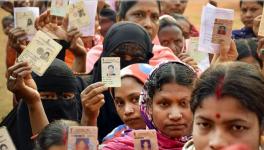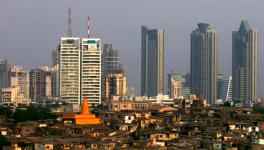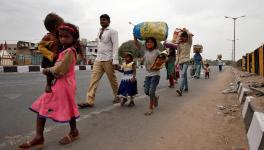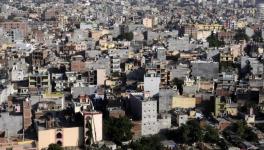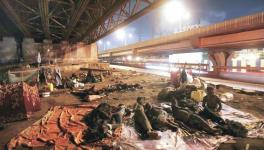Blue Sky Is Not Roof Enough
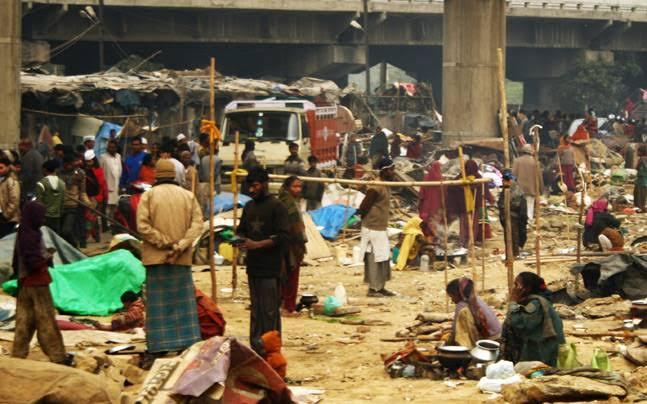
Image Courtesy: India Today
October 10 is World Homelessness Day, a day to commit afresh to building consistent struggles against growing worldwide homelessness. Social groups and civil society organisations are championing the cause of the homeless and have called for spending 24 hours with the homeless on the streets or wherever they spend their time. Such a radical protest across Indian cities is yet unknown, shall undoubtedly confirm that homelessness is not mere rooflessness.
Homelessness is the symptom of a grave economic, social and political disorder, writes Indu Prakash Singh in his book, City Makers. The disorder in all the three sectors has in fact worsened in the period of last three decades in India. The cities have been turned into entrepreneurship hubs and the mantra to run them is akin to running a business unit. The relentless profit-motive underpinning cities burdens their residents with a number of user charges. This is the direction city governance has taken today.
The poor and especially the most marginalised groups are the worst hit. The homeless do not even figure in the city-scape. It was only when the Supreme Court intervened that the homeless were considered by administrations and night shelters constructed.
One reason for growing homelessness is the increased economic vulnerability in cities. Access to building material has shrunk. Ever since housing was privatised, homelessness, as was bound to happen, has only increased. Over the last three decades of “development” large-scale migration from rural to urban areas has taken place. This is predominantly distress migration. City development has been inverted over this time period. Now, city plans have transformed into creating spaces and facilities only for the middle classes and the rich.
Any given city should retain 25% homes built as public housing. However, in Indian cities public housing, which was already limited to a fairly small 6% has not fallen to just 3%. Who will construct homes for the 97% who remain? The obvious answer is market forces. But as we know, the market works on the principle of profit and the poor who migrate to cities cannot access profit-making housing development schemes. The result is large-scale spikes in slums and homelessness.
The 2011 Census says that India has over 20 lakh homeless persons. However, experts say that of the total urban population in India, nearly 1% are homeless. That adds up to nearly 4 crore people in urban India, a huge figure. The homeless live on the pavements, on the sides of roads and at many other nooks and crannies which are uninhabitable and remain unseen.
WHO ARE THE HOMELESS?
The general misnomer about the homeless is that they are beggars. This is not true. A study conducted by the Indo Global Social Service Society (IGSSS) in Delhi’s slums shows that 5% of the homeless are workers and younger than 40 years old. This implies that most of the city’s homeless migrate here to find work and are compelled to leave once age-related conditions develop, after they turn 40 years old.
The other important highlight of this study is that some homeless people have been without a shelter for more than 10 years. Hence, for them, homelessness is not a transitory phase. A majority of the homeless tend to live in groups and form communities where they live. The study also pointed out the links that exist between growing informality in the nature of work in cities and the correspondent growth in homelessness. A majority of homeless male workers are daily-wage labourers or domestic workers, in the case of females.
In one homeless shelter I visited, I made the intriguing discovery that a majority worked part-time in marriage ceremonies as waiters and helpers.
Except in Delhi where the Delhi Urban Shelter Improvement Board (DUSIB) was given the charge for constructing night shelters for the homeless, in other cities the spaces meant for such shelters have been occupied, on some pretext, by the city municipality. They are using this space for some other purpose than the shelters.
In Delhi, the DUSIB has built and run shelters that are better than in other parts of the country. However, there is a pressing demand that the living conditions at these shelters must improve and their capacity increased too.
CONSTRUCT LABOUR HOSTELS
A city as large as Delhi does not have even one hostel for labourers. A large number of such hostels should be built to accommodate the migrant workers coming to the city. Lessons must be learnt from the labour hostels built more than 100 years ago in a small town, Shimla, which was then the summer capital of colonial India. These labour hostels still function and accommodate a large number of workers. There are even family labour hostels, run by the city municipality, which charges a nominal fee of no more than Rs30 a month.
Another example is the labour hostels built by the Kerala state government in some cities. These hostels are not only modern but even cater to some minimum needs of a migrant worker, such as food, bathing facilities and so on. It is believed that the Delhi government is contemplating the Kerala model of labour hostels, which would definitely be very encouraging.
This World Homelessness Day, let us resolve that the struggle to provide homes must continue along with the intricately connected struggle for decent living.
Get the latest reports & analysis with people's perspective on Protests, movements & deep analytical videos, discussions of the current affairs in your Telegram app. Subscribe to NewsClick's Telegram channel & get Real-Time updates on stories, as they get published on our website.









